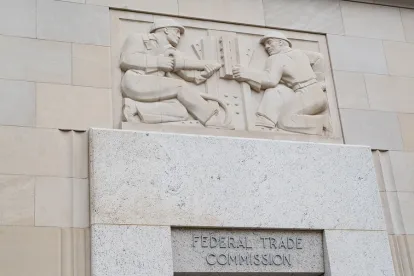On June 30, the Federal Trade Commission (FTC) and Department of Justice Antitrust Division (DOJ) released their first jointly issued Vertical Merger Guidelines. These Guidelines replace DOJ’s Non-Horizontal Merger Guidelines from 1984. Those 1984 guidelines were outdated, did not reflect current agency practices and were withdrawn by DOJ in January 2020. The new Guidelines are intended to describe how the agencies currently analyze non-horizontal transactions and to increase “the transparency of the analytical process underlying the Agencies’ enforcement decisions.”
Vertical mergers combine companies operating at different stages within a supply chain. The most common form of vertical merger is a firm’s combination with an upstream supplier or downstream customer, although the new Guidelines also reference, and apply to, “diagonal” mergers, reflecting the acquisition of a firm within a competing supply chain, and mergers involving “complements” within a supply chain.
The Vertical Merger Guidelines incorporate by reference many of the principles set forth in the agencies’ 2010 Horizontal Merger Guidelines, including methodologies for evaluating relevant market definition, market shares and industry concentration, as well as the appropriate sources of evidence to evaluate these issues.
As to the potential anticompetitive effects of vertical mergers, the new Guidelines do not state or imply any significant policy shift. The agencies continue to be concerned with the potential for unilateral effects in the form of foreclosure of competitors, raising rivals costs and the exchange of competitively sensitive information, and coordinated effects. In this regard, the new Guidelines reflect current agency practice and are not groundbreaking.
We note a few interesting points regarding the new Guidelines that could be relevant in responding to agency investigations or challenges of vertical mergers:
-
Elimination of Double Marginalization. The Guidelines recognize that “vertical mergers often benefit consumers through the elimination of double marginalization, which tends to lessen the risks of competitive harm.” The elimination of double marginalization (“EDM”) results from the fact that the combined firm is no longer required to pay the markup required by an independent supplier. EDM “can confer on the merged firm an incentive to set lower downstream prices,” because the merged firm “will have access to the input at cost.”
-
While conceptually similar to the concept of “efficiencies” discussed in the agencies’ Horizontal Merger Guidelines, the pro-competitive benefits from EDM are not subjected in the new Guidelines to the skepticism imposed by the agencies on efficiency claims in the Horizontal Merger Guidelines (and often in agency investigations). Rather, EDM benefits appear more easily accepted by the agencies as arising “directly from the alignment of economic incentives between the merging firms.” So while under the new Guidelines it is “incumbent upon the merging firms to provide substantiation for claims that they will benefit from the elimination of double marginalization,” a claim of competitive benefit from EDM in a vertical merger at least appears less dubious to the agencies than a claim of efficiencies in a horizontal merger.
-
Evaluation of “Net Effects.” The new Guidelines provide that the agencies’ evaluation of vertical mergers that warrant scrutiny “will generally include an assessment of the likely net effect on competition in the relevant market of all changes to the merged firm’s unilateral incentives,” which would include EDM. “The likely merger-induced increase or decrease in downstream prices would be determined by considering the impact of both these [foreclosure/raising rivals’ costs and EDM] effects, as well as any other competitive effects.” If applied in practice by the agencies, this may suggest a pragmatic approach, informed by economic logic.
-
No Safe Harbors. The draft Vertical Merger Guidelines published by the agencies for public comment in January 2020 reflected a quasi “safe-harbor” for vertical mergers, noting that “[t]he Agencies are unlikely to challenge a vertical merger where the parties to the merger have a share in the relevant market of less than 20 percent, and the related product is used in less than 20 percent of the relevant market.” That quasi safe-harbor does not appear in the final Vertical Merger Guidelines issued by the agencies on June 30, 2020. Some form of a safe harbor would have been useful to antitrust practitioners in counseling clients on antitrust risk to vertical mergers. That said, the Vertical Merger Guidelines as issued do reflect that both the ability and incentives of merging parties are conditions to be satisfied in “identifying whether a vertical merger may diminish competition due to unilateral foreclosure or raising rivals’ costs.” Based on accepted measures of “market power” for antitrust purposes, the deletion of this safe harbor should not likely be viewed as cause for antitrust alarm.
-
Remedies. The new Vertical Merger Guidelines do not address the important issue of remedies available to address potential anticompetitive effects of vertical mergers. Although these are joint Guidelines issued by FTC and DOJ, silence on this issue may well reflect a tension between FTC and DOJ, with silence being the default compromise between the agencies. DOJ has recently taken an aggressive position adverse to behavioral relief (the traditional mechanism for addressing potential anticompetitive effects in vertical mergers), as reflected in DOJ’s decision to challenge and litigate the now completed vertical merger of AT&T and Time Warner Inc. FTC’s current position with respect to the acceptability of behavioral relief to resolve potential anticompetitive effects in vertical mergers appears less adverse.
While the FTC and DOJ jointly issued these new Vertical Merger Guidelines, the two FTC Democratic commissioners voted against issuing the Guidelines.





 />i
/>i

